May 2025
| PIETMAN BOTHA, INDEPENDENT AGRI- CULTURAL CONSULTANT |
 |
MANAGING WINTER WEEDS IS ESSENTIAL, NOT OPTIONAL. BY SPRING, FIELDS MUST BE FREE OF THESE WEEDS, AS THEY CAN BECOME A SIGNIFICANT ISSUE. THESE WEEDS ARE ADAPTED TO WINTER CONDITIONS, ALLOWING THEM TO SURVIVE AND GROW EVEN DURING DRY PERIODS. WINTER WEEDS CAN ALSO USE WATER EFFICIENTLY, WHICH ENABLES THEM TO GROW RAPIDLY AND UNCONTROLLABLY AFTER THE FIRST SUMMER RAINS.
Normally weeds don’t grow above the ground in the winter, but their roots grow rapidly under the ground. With a well-developed root system, winter weeds can utilise the moisture in the soil and with the first rain this leads to rapid growth. The plants will utilise the first rain moisture effectively and expand rapidly, with the result of fields being too dry to cultivate or plant.
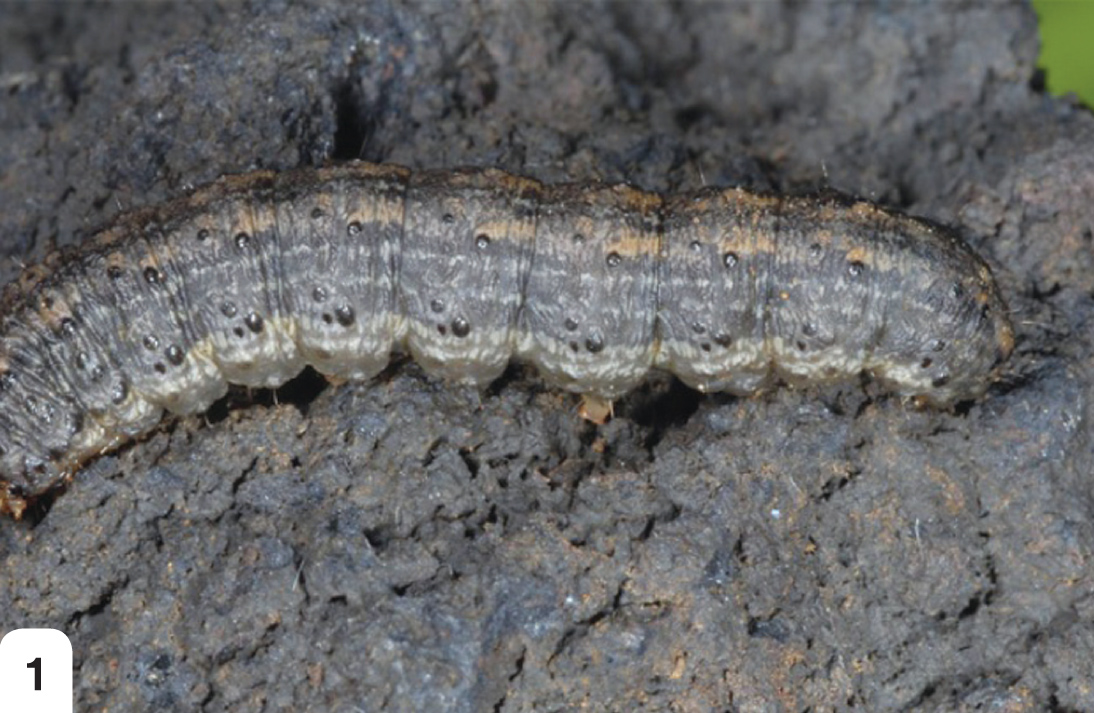
Cutworm larvae have a smooth, waxy appearance and are dirty grey or brown in colour.
(Source: http://www.pyrgus.de/Agrotis_segetum_en.html)
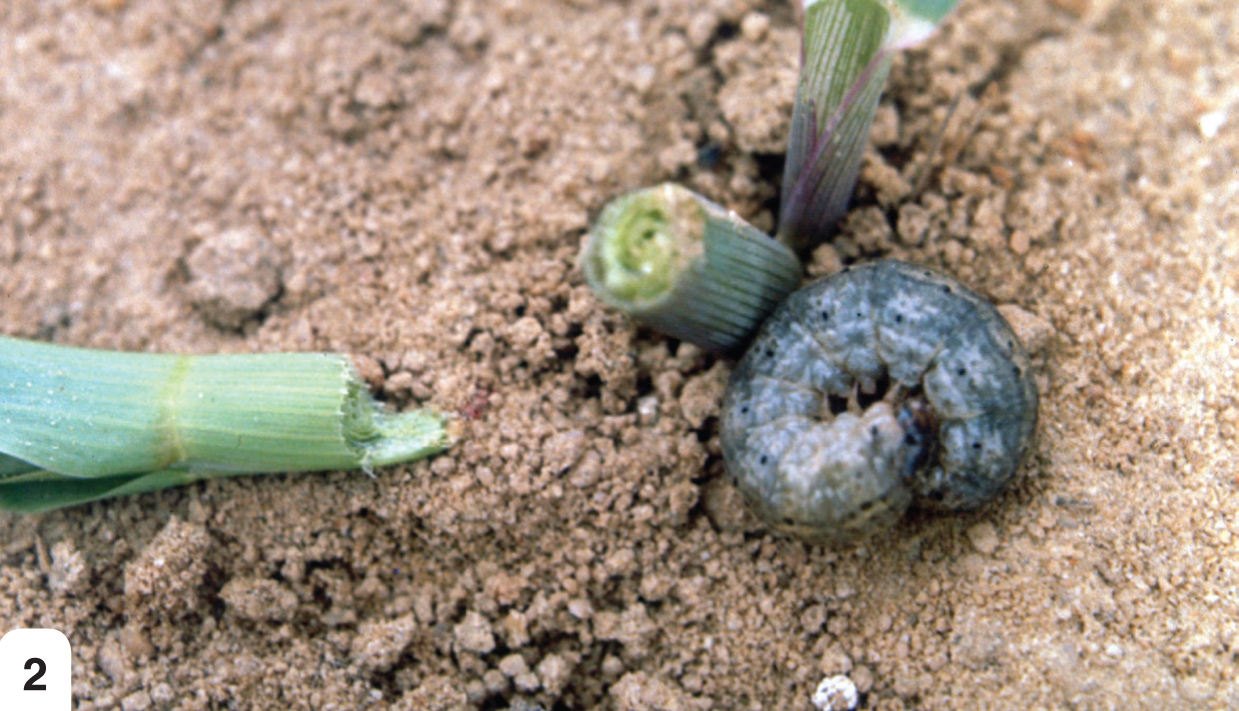
Characteristic cutworm larvae damage to a seedling is clearly visible.
(Source: Clemson University – USDA Cooperative Extension Slide Series, Bugwood.org)
Conyza spp. are common winter weeds that need to be controlled. These include:
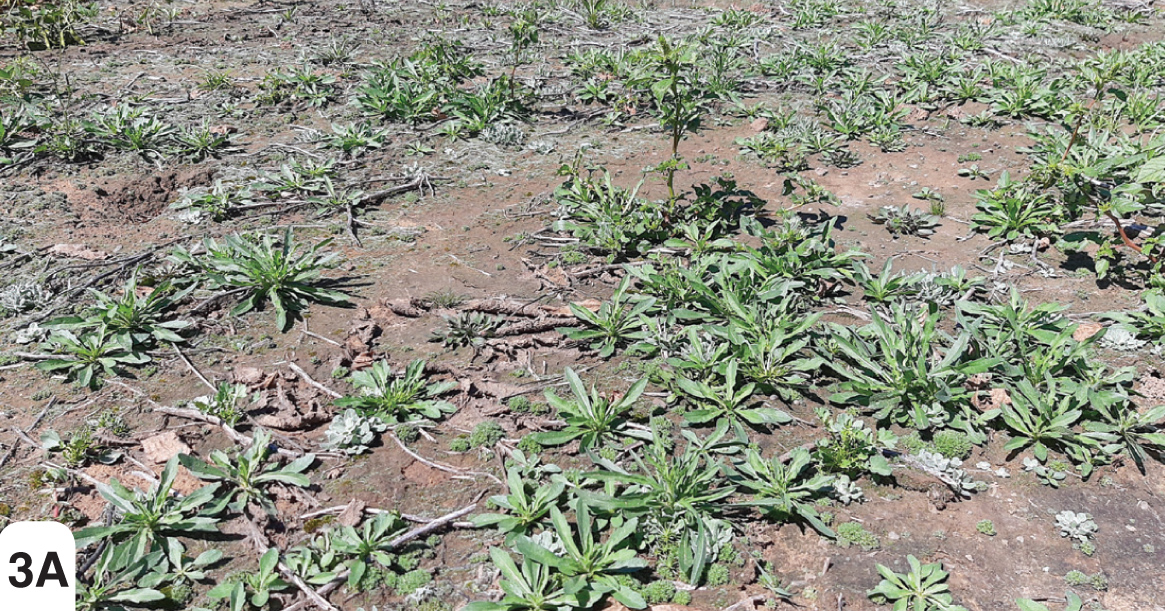
Young Conyza plants.
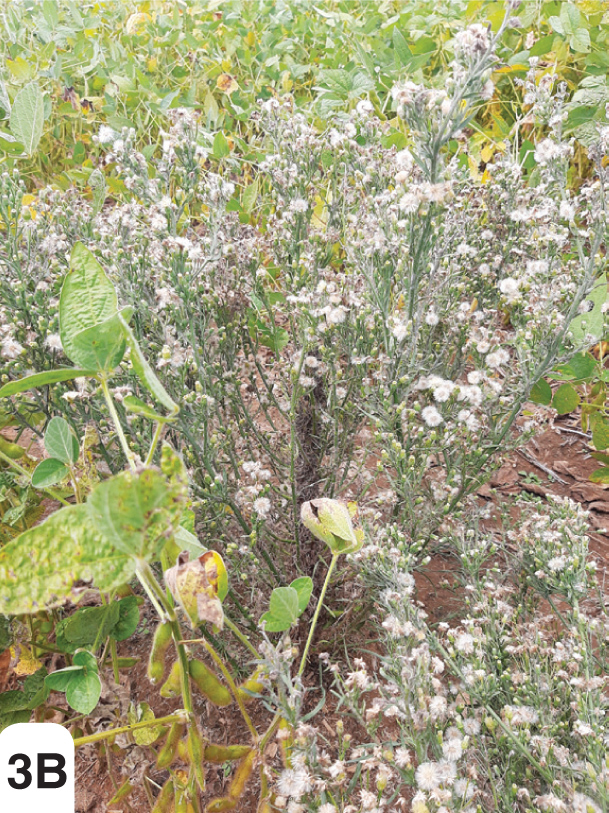
A flowering fleabane bush.
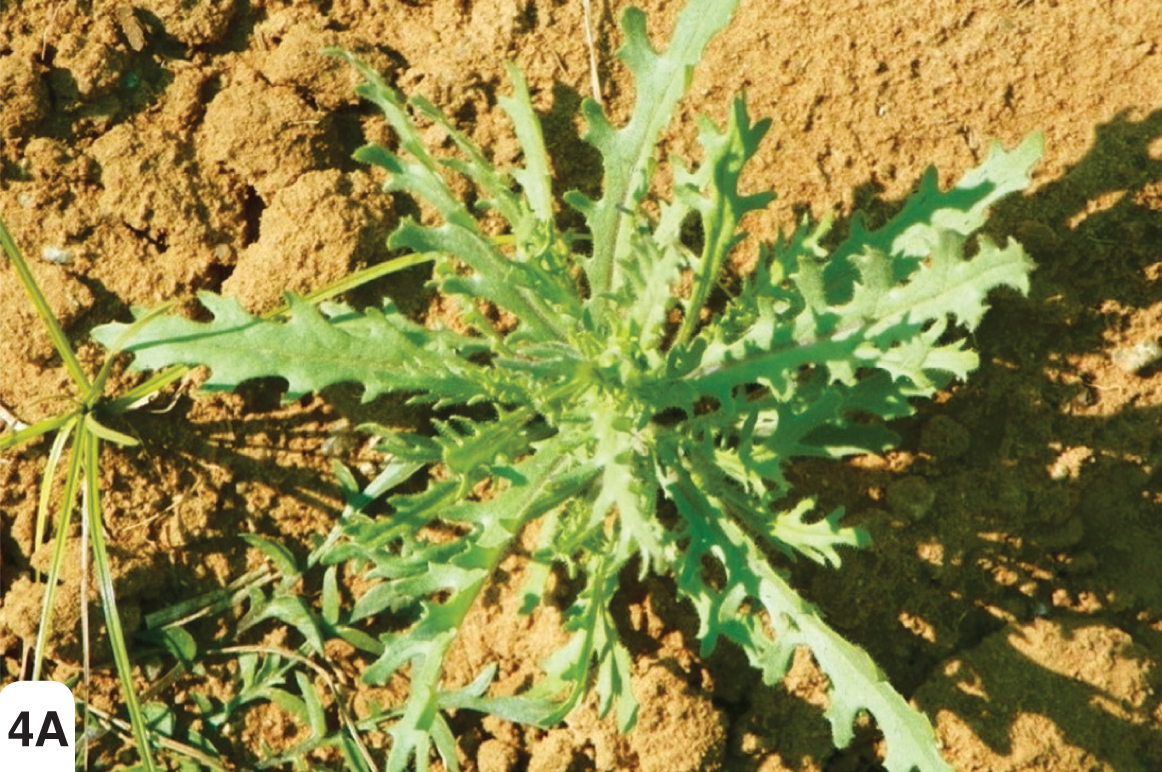
A seedling of the ragwort plant.
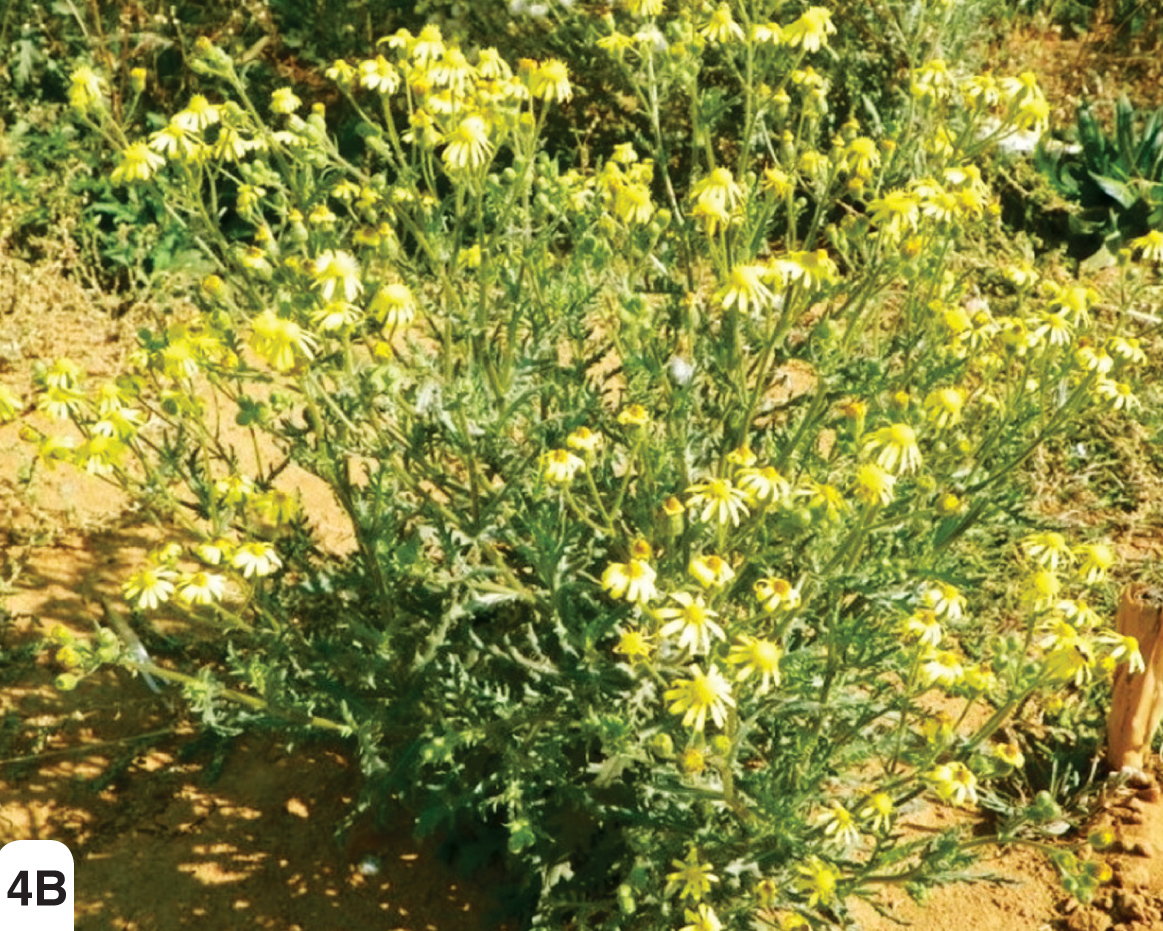
An adult ragwort bush.
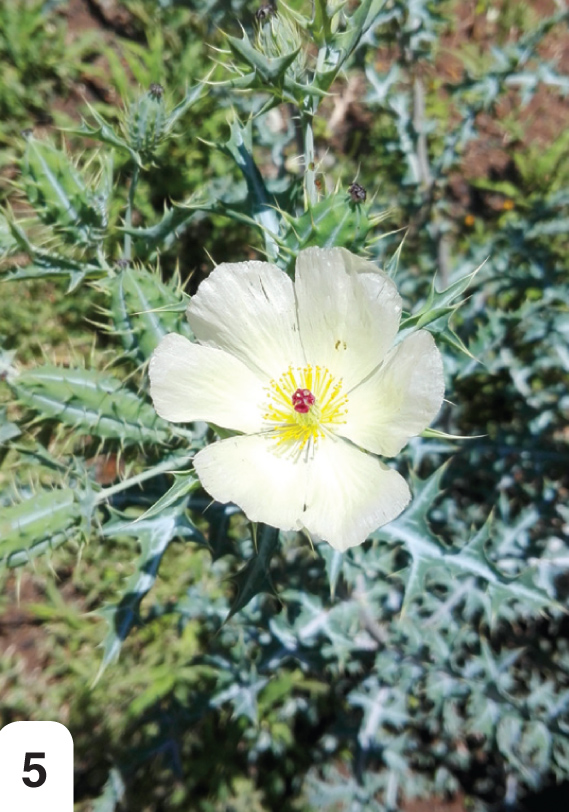
An argemone (Mexican poppy) or white-flowered blue thistle plant.
Farmers who control winter weeds normally harvest better yields than those who do not. The main reasons for this are that there is more moisture in the soil at planting when there are no weeds present and better cutworm control before planting. Farmers need moisture and plants to produce a crop. With the absence of one, the yield will be lower.
THE IMPORTANCE OF CUTWORM CONTROL
Several Agrotis cutworm species (Lepidoptera: Noctuidae) are present in South Africa, but the common cutworm (Agrotis segetum) is the most prominent species. The larvae (Photo 1) are dirty grey or brown in colour with a smooth, waxy appearance.
The cutworm’s lifecycle starts in the autumn when the cutworm moths lay eggs, which give rise to larvae. These larvae develop into full-grown larvae that remain in the soil until the end of the winter and the beginning of spring. The larvae will survive the winter by eating winter weeds and winter crops.
During August and September, the overwintering larvae pupate and about two weeks later, the first moths of the season appear. These moths pose a threat to planted seedlings. At night the cutworm moths fly and lay eggs on the leaves of weeds and crops found in the fields. Within a week, larvae hatch and feed on the leaves of the weeds or crops.
After the second moult, the larvae crawl into the soil and only come out at night to feed. Cutworms move from seedling to seedling, eating each one at ground level. In this way, one larva can destroy many seedlings in a single night.
By controlling the winter and early spring weeds (including the volunteer crop plants), the cutworm’s lifecycle can be impacted negatively. Please ensure that the fields have been clean of weeds for 35 days before planting (where practically possible).
According to Hiresh Ramanand, stewardship coordinator at CropLife, a minimum of 35 weed-free days prior to planting is generally required in order to starve larvae.
HOW TO CONTROL WINTER WEEDS
Normally, a shallow tillage or diss action as early as possible, as well as herbicide application to younger, smaller plants during late March or early April can control winter weeds. However, this is not normally possible because the crops are not harvest ready. It means that the fields must be worked as soon as possible, while the weeds are still young. For instance, the Conyza spp. must still be in the rosette stage for herbicides to work properly.
In maize fields, applying herbicides during late March or early April can be difficult. Normally aerial spraying or a high-boy sprayer is needed. The problem is that the herbicide is not necessarily registered for this practice, which makes it very difficult to spray winter weeds with great success. The lower temperatures during June, July and August also have a negative influence on herbicides. This means the use of implements is a good option in a conventional production system.
When shallow cultivators are used, farmers must ensure that the implements work effectively and that all winter weeds are worked out. The faster the fields are cultivated after harvesting, the better the winter weed control will be.
Using herbicides
Suppose a farmer wants to use herbicides to control sedges in particular. Scientific studies mostly support the use of glyphosate in mixtures with other herbicides, with different effects regarding the alternation or rotation of herbicides in the management of resistance development. According to label instructions, 2,4D can be sprayed in combination with glyphosate or atrazine. However, be warned about the residual effect of atrazine on subsequent crops.
Dr Maryke Craven, senior researcher at ARC-Grain Crops, recommends using Paraquat, a non-selective weed herbicide. Ensure that the weeds are fully wetted, with at least 300 litres of water per hectare.
Glyphosate can also help control ragwort (radiatorbossie) and Mexican poppy (white-flowered blue thistle). Just make sure that you consult your herbicide representative to make the best decision for winter weed control.
Crop rotation
Don’t overlook crop rotation in the combat of winter weeds. Sunflowers and soybeans give farmers the option to control and manage the weeds earlier. These crops don’t have as much stubble as maize and therefore the control is normally better. The fields can also be used for grazing, and lime can also be spread.
Farmers must manage winter weeds carefully. Discuss it with your herbicide representative in advance so that a plan can be made to find the best options to control weeds. Consider all the planned cultivation actions to find the best solution.
CONCLUSION
If you decide to control winter weeds chemically, focus on efficiency.
Publication: May 2025
Section: Pula/Imvula